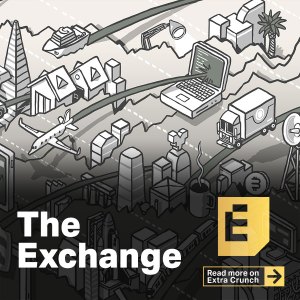Hollywood has been better known for making films and TV shows about the tech industry than it has been for being a part of it, but today a new enterprise is launching, backed by a major Silicon Valley venture firm, that hopes to hit pause on that image.
Imagine Impact, a content accelerator that launched two years ago under production powerhouse Imagine Entertainment to impart a “Y Combinator” approach to sourcing new work and connecting it with production opportunities, has raised a Series A round of funding from Benchmark, the VC firm that has backed Uber, Twitter, Dropbox, Snapchat and many more — funding that it plans to use to continue building out its accelerator model as well as launching new technology ventures, it said.
With the investment, Imagine Impact is effectively spinning out of Imagine Entertainment, and rebranding as a standalone company called Impact Creative Systems.
Brian Grazer and Ron Howard, the high profile duo that in 1985 started the film and TV production company that has been behind a string of hits, stay on as founders, but Impact (as the firm calls itself) will be run day to day by CEO Tyler Mitchell. (And all three will be talking with us on the Disrupt stage today about this and more.)
Mitchell says that the amount of the investment, the first outside money that Impact has taken, is not being disclosed but that it’s in line with a typical Benchmark Series A. That would put it between $10 million and $20 million. The investment is being led by Bill Gurley, who will join the board with the deal.
The funding will be used to help the firm spearhead new ventures that continue building out the idea of taking a new approach to networking and finding career opportunities throughout the entertainment industry, breaking down some of the barriers of how business has always been done — through networks of who you know, lots of lunches and other hobnobbing. The idea is for the projects coming out of Impact to be underpinned not just with a tech ethos, but with actual technology.
First up is the launch later this year of The Creative Network, which Imagine describes as “an online marketplace and professional networking platform designed specifically for entertainment industry professionals to help bring efficiency and access to Hollywood.” It’s a little like LinkedIn meets Behance.
Up to now, Impact has been focusing its energies on building out its accelerators and securing deals for the writers in its cohorts, with the whole set-up inspired by the famous Silicon Valley accelerator.
The YC playbook is used in two ways. The first is in the model it’s using, where it opens applications to anyone interested to applying, and then provides those selected with mentorship, time and a little financing to do their creative work. The second comes in the form of the mentors having a lot of connections in the industry and using those to help the writers connect with others to produce their work.
The accelerator model has seen an accelerating amount of interest. Impact now has built a second accelerator outside of LA, in Australia; it has started a podcast featuring interviews with famous actors, directors and others (pointing to other kinds of content that it might spin out as business projects). And its inked a deal with Netflix Films to help source and develop content globally.
And perhaps most interestingly for laying groundwork for The Creative Network, it has built up a network of 30,000 writers across 80 countries; it has helped develop 72 projects; and 25 of those are now with major studios.
Those efforts have also had some tech built around them. Mitchell said that a beta of sorts for The Creative Network was built originally to use for the accelerator. “We built it because we were just three people running the accelerator and didn’t have the human resources available to send out or read potentially thousands of scripts” — specifically 3,000 script submissions in 72 hours — “so we built a mobile app.” Features include the ability to push submissions, make watermarks and track emails in the bigger database, the said.
“We talk about ourselves as a dating app,” joked Mitchell. “You have to get four people to fall in love with one story or writer or piece of material” to advance, he said, “the producer, director, star and financier. That involves a lot of phone calls and relationships and phone tag. It can be a very long process to triangulate and build the right teams.”
While efforts so far have been focused on building ways of connecting writers with producers, the bigger picture is to build a network that can bring in the rest of the ecosystem, including directors, actors and the extensive technical and admin talent needed to get a project off the ground and on to a screen. All of these connections up to now have been firmly stuck in the analogue world, making them slow, limited in terms of inclusiveness, and obviously very ripe for technological disruption.
“It takes 500-1,000 people in total to bring a project to life,” Mitchell said. And the bigger opportunity for connecting networks is massive. Mitchell estimates that just in the US, the production business employs 2.6 million people and accounts for some $177 million in wages each year and it’s growing.
“The old way of sourcing talent in the entertainment industry is based on who you know, which presents high barriers-to-entry for the fresh voices we need to hear from,” said Gurley, in a statement. “Impact is knocking down these barriers through a marketplace model that reduces information asymmetry and levels the playing field. Ultimately this leads to more opportunities and better outcomes for everyone involved.”
Indeed, Hollywood has been between a rock and a hard place when it comes to changing up its ways.
On one side, the industry regularly faces criticism for lacking diversity in its ranks and failing to identify with the masses. Complaints include too few women in decision-making roles and the difficulty of finding work if you don’t fit into particular age and appearance types; accusations of racism (OscarsSoWhite being a recurring theme each awards season); and more.
On the other, the media industry — including how consumers watch video — is rapidly evolving. For better or worse, the TV was once the absolute epicenter of how a family came together and saw what was happening in the world outside. Those Happy Days are gone now, so to speak. People watch YouTube and TikTok, Snapchat and Netflix, and while some of that definitely is still tapping into the older Hollywood ecosystem — Netflix, of course, repurposes a lot of traditional TV and film content, and commissions its own — it also speaks to just how rapidly the mediums and their delivery are changing.
While the first efforts of Impact are addressing the first group of these issues, one follow up question — the sequel, you might say — might be how and if Impact chooses to use its networks, tech and strategy to think about the second of these.
Before coming to the entertainment industry (he was been a writer and producer for years before this) Mitchell said he had a background in finance and has “always been entrepreneurial.” The tech scene in LA has definitely been growing over the years — it’s home to Snap and others — meaning its ripe for tapping for hiring more people for the startup.
“We’re talking with data scientists to build better algorithms for the Network and yes we’re hiring engineers,” he said. “We’ve attracted some incredible talent and the majoirty of the investment is going to scaling our team.” Impact now has 11 full time technical staff, he said.
“We could not be more thrilled to be working with Benchmark. They have an unrivaled track record in building marketplaces and companies that have changed the world,” said Grazer, in a statement. “From the moment we met Bill, it was clear that he understood and believed in our vision. Benchmark is not just an investor, but a true partner, whose expertise you can’t put a price on.”
“With Benchmark, we are now in a better place to serve the greater creative community worldwide,” said Howard, in a statement. “Their investment enables us to go wider and deeper in bringing great storytellers to the forefront and connecting them to the entertainment industry.”





